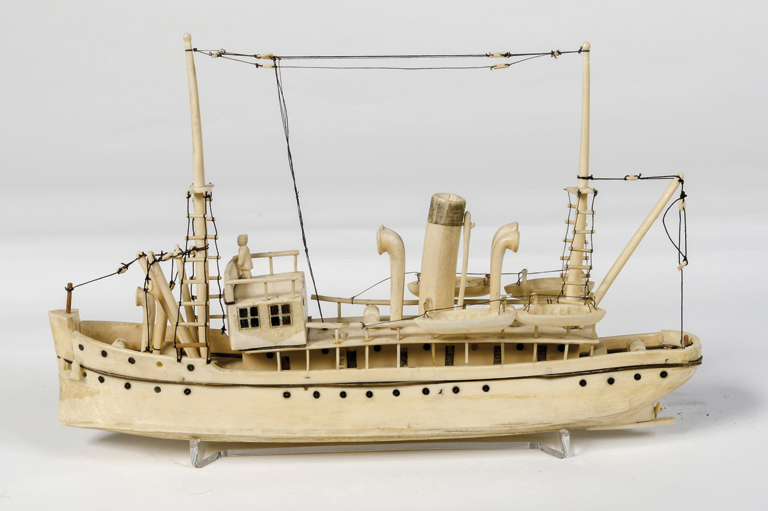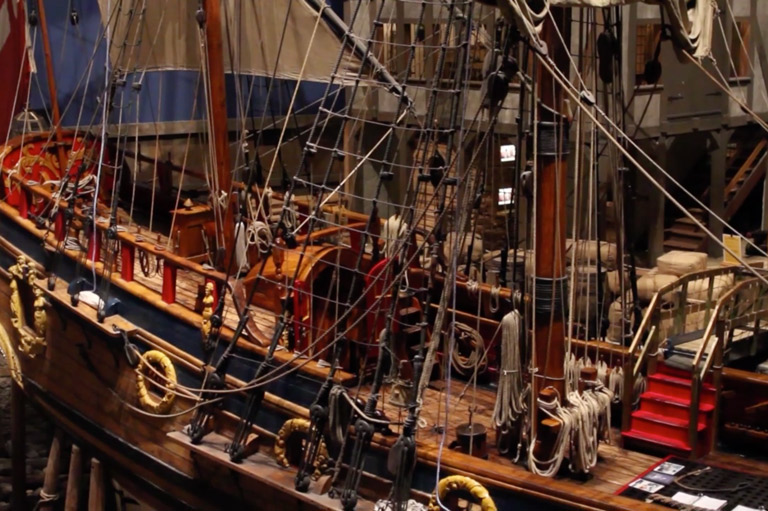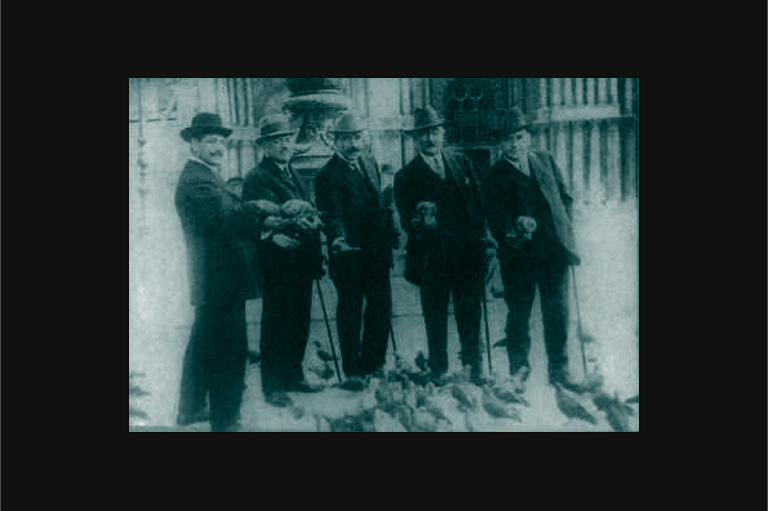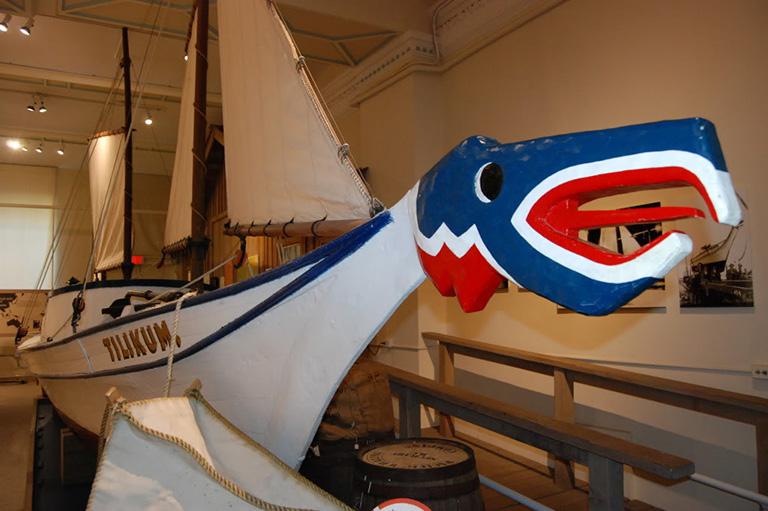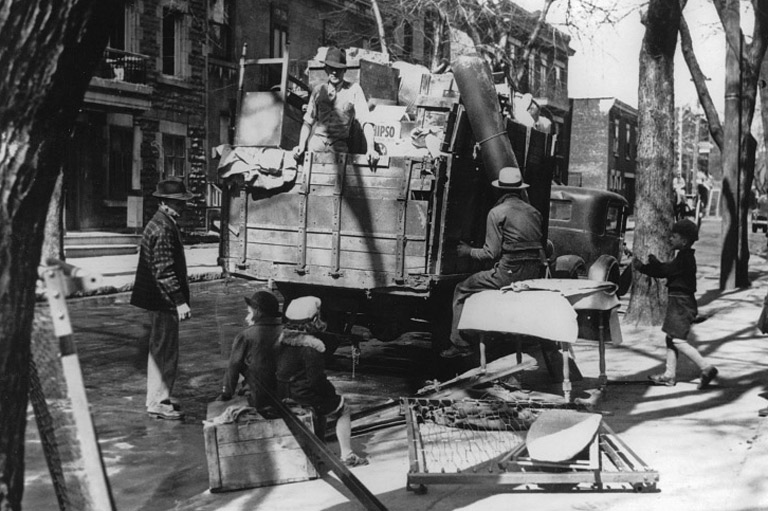S.S. Baychimo Icebound
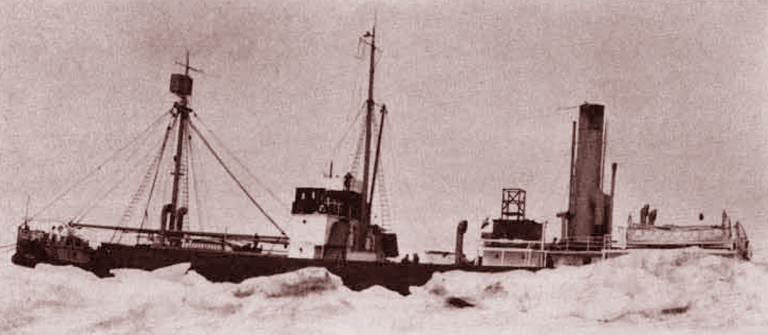
As we go to press, the S.S. Baychimo is fast in the ice off Franklin Point on the northwest coast of Alaska, not far from Point Barrow, the northernmost tip of the mainland of this continent. She is expected to remain there until the ice goes out late next summer.
After being greatly delayed by ice on her outward voyage from Vancouver with supplies for the Western Arctic district, she finally arrived at Herschel Island on August 26. After discharging there with great dispatch, Captain Cornwell pushed through as far as Fort Hearne, at the mouth of the Coppermine river, from which point it was deemed advisable to turn back without quite completing the itinerary of normal years, in order to round Point Barrow and clear the Bering Straits before the Arctic Ocean became ice-locked for another year.
Requirements of posts to the eastward of Coppermine were taken care of by local schooners, leaving only Fort Collinson, at Walker Bay, Victoria Land, not having been visited.
It is not the policy of the Hudson’s Bay Company to leave our men a second winter without communication from the outside world where this can possibly be avoided; so, although reports from the post six months before had indicated that all was well in this remote corner and sufficient provisions on hand for another year, an aeroplane was chartered for the most northerly commercial flight ever attempted, and sent up to Fort Collinson with long awaited mail and letters from home, and also such fresh vegetables and fruit and Christmas fare as the machine could accommodate.
The staff was found well and happy and, after an hour’s visit, left alone for another year.
On her attempt to regain the Bering Sea and North Pacific, all went well with the Baychimo until she had a scant hundred miles to go to reach the open ocean. But soon after rounding Point Barrow, impenetrable ice fields were encountered, driven hard against the Alaskan coast by long periods of westerly winds.
There was nothing to do but wait for favourable winds to open a passage along the coast, and, as the days dragged past, it became a question whether these winds would come before the cold weather which would cement the floes and make release impossible.

Early in October, the temperature dropped to ten below zero, with new ice making fast, and still no sign of the sought for easterly gales.
By the 10th, it became apparent the ship would not move again until next summer, so immediate arrangements were made for the removal by plane of those not obliged to stand by the ship, while eager hands commenced the construction of a cabin on the beach which would house the captain and sixteen remaining officers and crew, it being impossible to heat the steel ship through the Arctic winter sufficiently to live on board.
From October 15 to 23, nineteen men were flown six hundred miles to Nome to make close connections with the last passenger sailing for Seattle, while three others, who arrived a few hours late, were fortunate to be given passage on an American naval cutter just about to leave.

On approximately the latter date, the seventeen men still with the ship moved ashore into their winter home, constructed from hatches, tarpaulins and other materials from the vessel, taking with them the extra stores, food supplies, and winter clothing carried for just such an emergency.
These, supplemented by ample quantities of reindeer meat procurable from Inuit herders, and supplies carried in by the aeroplane, leave them adequately provisioned, while the ships’ radio equipment set up on shore will maintain constant communication with the outside world.
Wherever possible, the men were allowed to choose between being shipped out or remaining with the ship, so it is chiefly the adventurously inclined who remain, and these view the approaching eight or nine months with interest and no worldly worries.
Themes associated with this article
Advertisement
You might also like...

Canada’s History Archive, featuring The Beaver, is now available for your browsing and searching pleasure!

